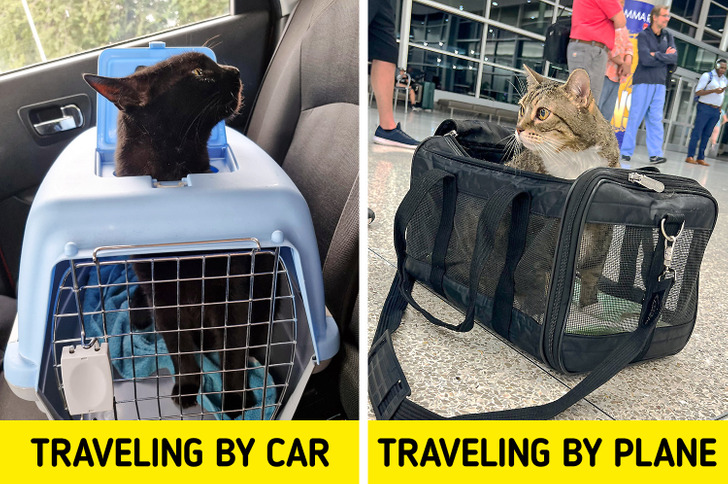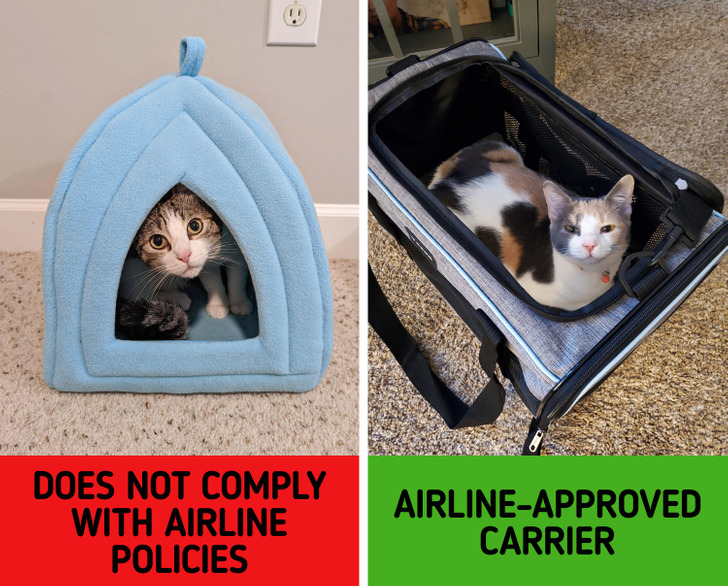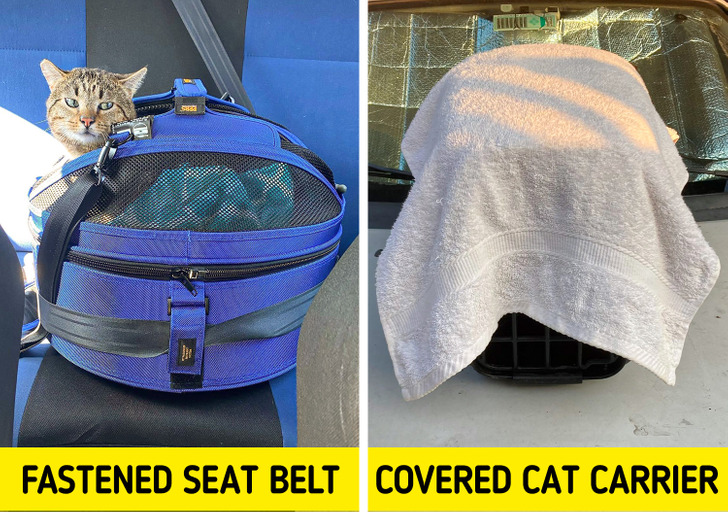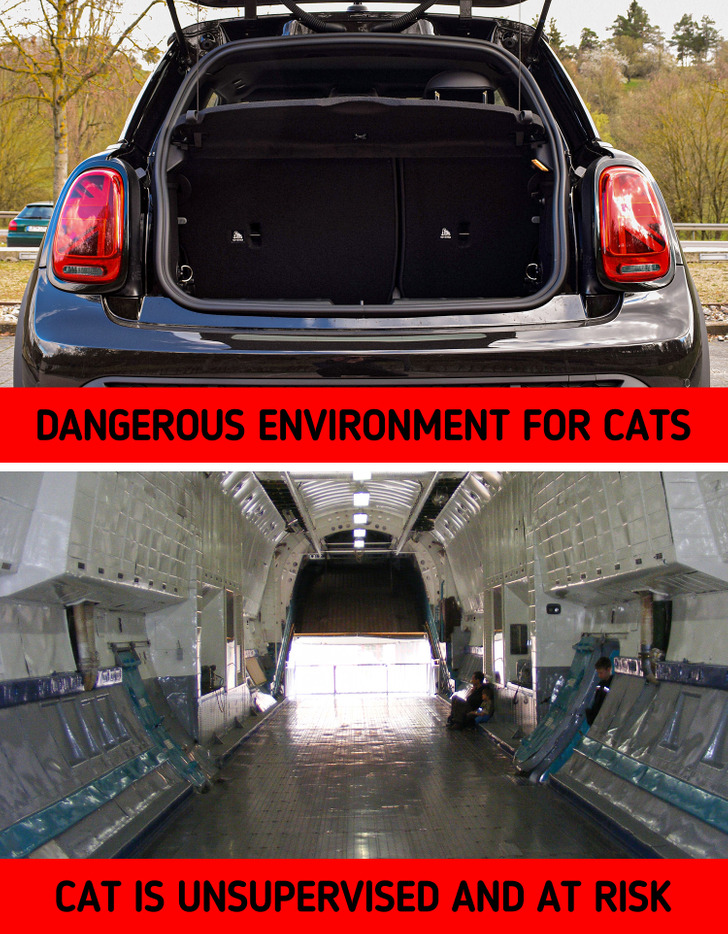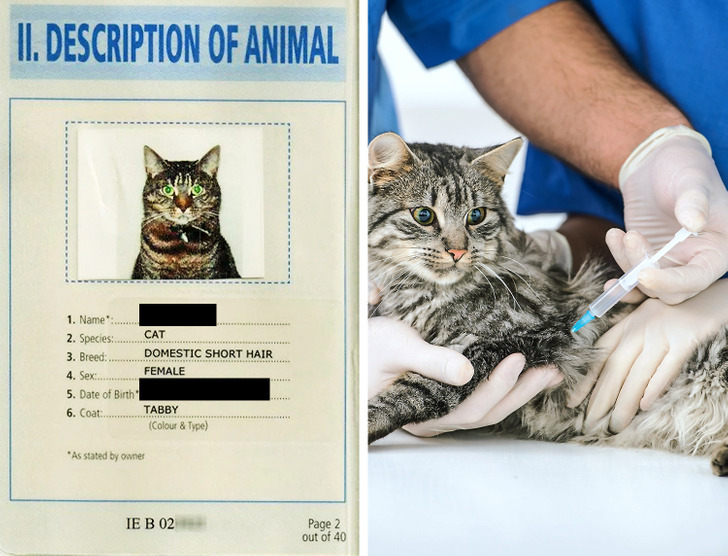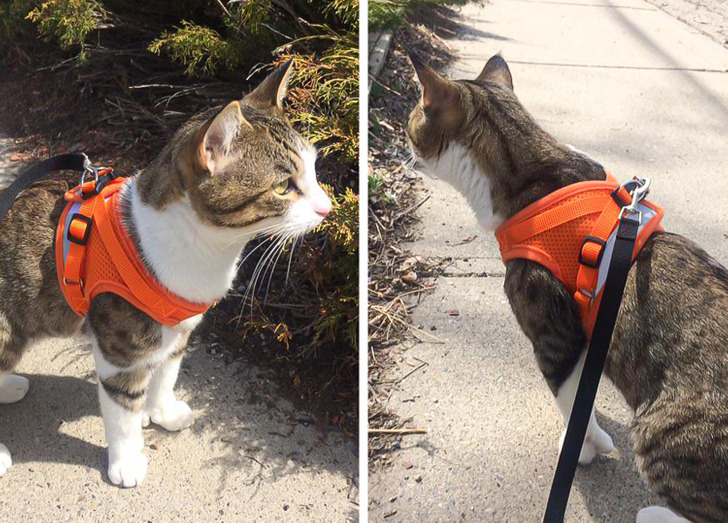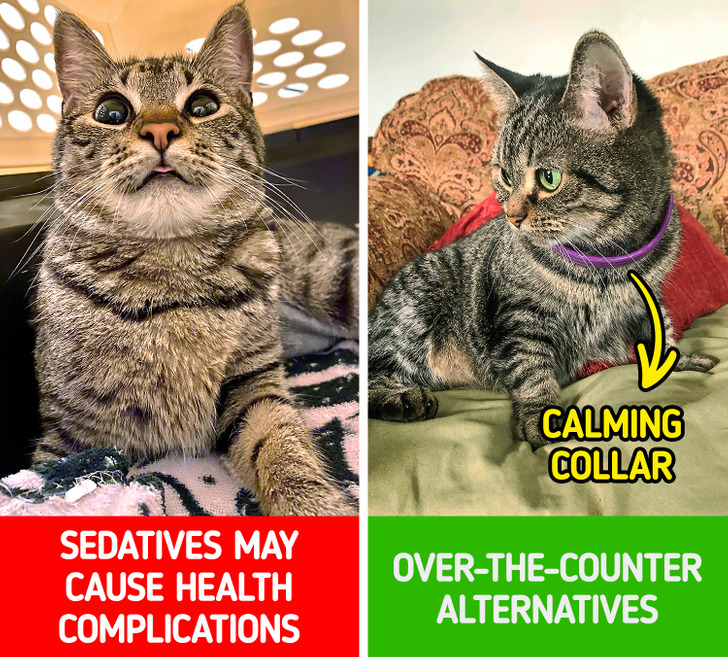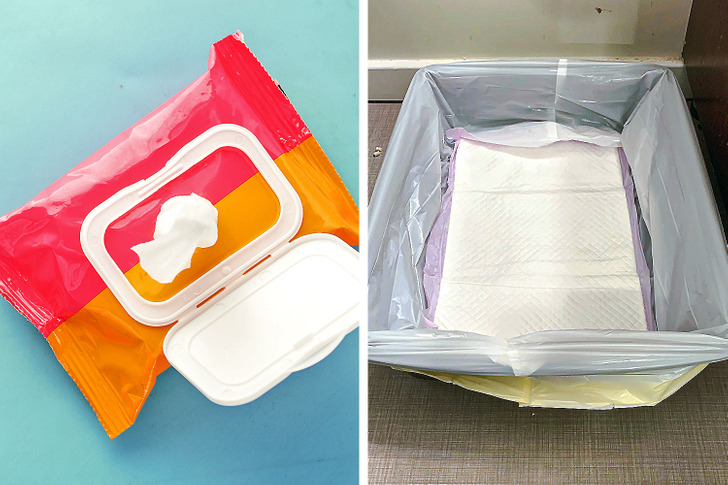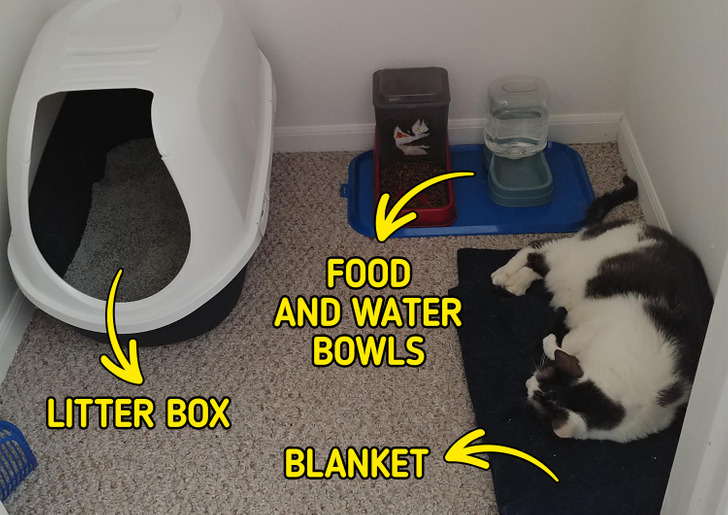11 Useful Tips To Keep In Mind When Traveling With Your Cat
Traveling may be a fulfilling experience, but it can also be quite a stressful one. When you’re traveling with a cat, however, the stress ramps up—especially for them. Cats are creatures of habit, and it’s likely that their only experience traveling involves unwanted visits to the vet, which makes them even less eager to get into their carrier.
However, there are many things you can do to make traveling a less stressful event for them, which in turn will also make things easier for you. 5-Minute Crafts has prepared a list of tips you can follow to make traveling with your cat more manageable.
1. Choosing the best way to travel with your cat.
A cat will always prefer to stay at home, so traveling, no matter the means of transportation will always be a stressful situation. The length of your trip will have an impact on which method of transportation is better. If you’re traveling a long distance, flying with your cat will be the most favorable option due to the shorter amount of time spent traveling.
However, flying with your cat comes with its own set of drawbacks. For starters, it is likely that the new country you’re in will make you take your cat out of its carrier when you’re going through airport security. You can ask for a private screening room, but the situation may still be hard for your cat to handle. In addition to this, your cat may not be allowed on the plane if they’re elderly, too young, or not in good health. Usually, you will be allowed to take a cat that weighs up to 12 pounds with you.
Regardless of the means of transportation, it’s advisable to let your cat get used to the idea of traveling. Take them on car trips so they get used to being in a vehicle and so they don’t associate car rides with going to the vet. The idea is to do it gradually and reward them, so the idea of traveling starts becoming less stressful.
2. Get the right kind of carrier.
Your cat’s comfort and safety are of paramount importance, and the carrier that you choose for traveling will play a big role in this. An obstacle you’ll have to face if you travel with your cat by air is the fact that you’ll have to comply with airline policies, which may vary from airport to airport. In general, the requirements that your carrier must comply with to be approved by the airline include having a waterproof bottom, proper ventilation, and security mechanisms, and it must contain your pet’s entire head and body. Additionally, the carrier must be large enough so your cat can comfortably stand up and turn around while inside the carrier.
To make the experience less stressful for your cat, make sure to introduce them to their carrier beforehand. Leave it open for days or weeks before your trip if your cat isn’t already used to their carrier, and make sure to put treats and things that smell familiar to them to make their new environment inviting and home-like.
3. Safely secure your cat’s carrier in place.
Your pet carrier will be your cat’s safe space while they’re traveling, which is why it’s so important to keep it secured during the trip. If you’re traveling by car, the safest way to do so is to put your cat carrier in the backseat. You should always fasten a seat belt around the carrier, no matter where the carrier is placed. You can secure the carrier further in the backseat by placing other objects around it to keep it in place, but make sure to not affect the carrier’s ventilation.
You can also indirectly secure your carrier by placing a blanket or a towel on top of it. This will make your cat feel like they’re hiding from what’s going on outside, which can have a comforting effect. This will also minimize the possibility of your cat flailing around, which compromises the stability of the carrier.
4. Do not make your cat travel in the trunk of your car or in the cargo area of the plane.
You should keep a close eye on your cat while traveling, not only so you can properly monitor the situation but also so your cat can look at you for reassurance during the trip. For this reason, you should, under no circumstances, leave your cat alone in the trunk of your car. Being inside the trunk will be stressful for your cat primarily due to the increased amounts of noise, as well as the lack of light and ventilation.
If you’re traveling by air, you should avoid putting your cat in the cargo area of the plane. Much like the trunk of your car, the cargo area of a plane is a loud and unknown place where your cat won’t be able to turn to you—or anybody—for help. An unattended cat may injure itself while clawing its way out of its carrier, and it may even escape from it. In addition to this, cats face other hazards when flying in a plane’s cargo area, namely the temperature and the risk of having luggage fall on top of their carrier. Instead, it’s recommended for you to check in with the airline to see if they allow your cat to travel under your seat as carry-on luggage.
5. Read up on all potential vaccinations and paperwork.
If you’re traveling by air, and especially if you are traveling abroad, you should research and check with the airline for any requirements that your country of destination has put in place with regards to paperwork and vaccines. Each country has different requirements, but a pet passport and a vaccination against rabies are commonplace requirements.
It’s recommended that you pay a visit to your cat’s vet months in advance before traveling, in case they need a specific vaccine or health certificate. For most destinations, for example, your cat’s rabies vaccination must be at least 30 days old.
6. Give them comforting items.
Cats rely heavily on scent to process what’s going on around them, and they can find familiar scents comforting. Because of this, it will be beneficial to put certain items that your cat is attached to inside the carrier. Consider putting some of their favorite toys, the blanket that they sleep on, or even one of your shirts inside the carrier, as they’re marked with scents that your cat associates with their territory.
7. Harness train your cat.
Since your cat will likely have to be taken out of their carrier when you go through airport security, it will be helpful to harness train them so you can stop them from running away and getting lost at the airport. Likewise, if you’re taking a long trip in a car with a harness trained cat, you will be able to stop along the way and take them out for a walk so they can stretch their legs.
Using a cat harness will also be helpful once you arrive at your destination. Out of stress, your cat may frantically run away as soon as they have the chance once you have arrived. Keeping them on a harness will keep your cat restrained while they get used to their new environment.
8. Be wary of sedating your cat.
Some might recommend that you sedate your cat before travel, but this should only be considered as a last resort, and only after your cat’s veterinarian has approved it as well as overseen the dosage of the sedative. Sedation will confuse your cat, preventing them from properly regulating their body. Additionally, sedatives can have an impact on your cat’s blood pressure, heart rate, and respiratory rate—which is particularly dangerous during a stressful situation like traveling.
If you’re adamant about sedating your cat before traveling, make sure to test the medication first in the comfort and safety of your house in case your cat doesn’t respond well to the medication. Another option is to go with over-the-counter alternatives to sedatives, as is the case with catnip, calming spray, and other similar products.
9. Have pet-approved wet wipes and cleaning supplies on hand.
Even during short trips, your cat will likely feel the need to pee in their carrier, or they may experience motion sickness, which can lead to vomiting and diarrhea. Having cleaning supplies like wet wipes, paper towels, and plastic bags will come in handy in these situations, but make sure you’re using products that are suitable for your cat. You can also put absorbent pee pads in your cat’s carrier to absorb any waste.
10. After arriving at your destination, set up your cat’s base camp.
Once you’ve settled in at your destination, you’ll have to do the same thing for your cat. Your cat’s base camp can be understood as the heart of their territory—a safe place where they can find familiar items and scents. Since cats consider their humans as part of their territory, it is advisable to set up your cat’s base camp in a room where they can feel their humans’ scent, which will help them think of their new space as home.
Some of the things that will help your cat get acclimated to their new space include their litterbox, food and water bowls, favorite toys, and a scratching surface. The last item may not seem as necessary as the rest, but cats have scent glands in their paws that allow them to mark their territory by scratching on a surface.
11. Maintain your usual routine.
Once the stress from the trip subsides, you should stick to your daily habits and routines with your cat as a way to make them feel comfortable while they’re away from home, particularly with regard to their feeding times. If your cat is routinely taken out on walks, you should also try to stick to that habit to give your cat a sense of normalcy.
